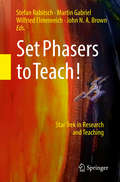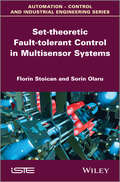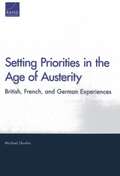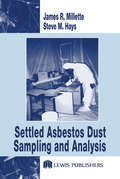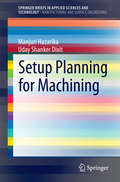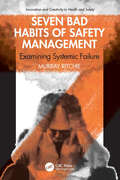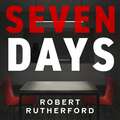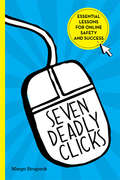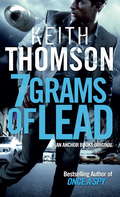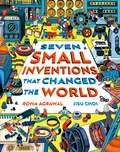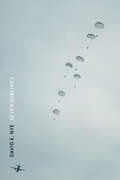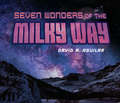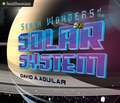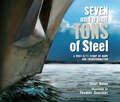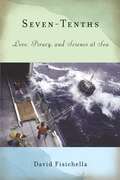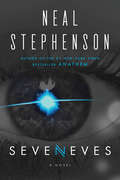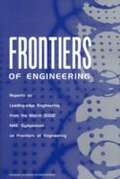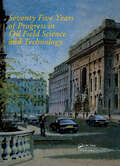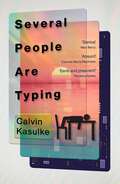- Table View
- List View
Set Phasers to Teach!: Star Trek in Research and Teaching
by Wilfried Elmenreich John N.A. Brown Stefan Rabitsch Martin GabrielFor 50 years, Star Trek has been an inspiration to its fans around the world, helping them to dream of a better future. This inspiration has entered our culture and helped to shape much of the technology of the early 21st Century.The contributors to this volume are researchers and teachers in a wide variety of disciplines; from Astrophysics to Ethnology, from English and History to Medicine and Video Games, and from American Studies to the study of Collective Computing Systems. What the authors have in common is that some version of Star Trek has inspired them, not only in their dreams of what may be, but in the ways in which they work - and teach others to work - here in the real world. Introduced with references to Star Trek films and television shows, and illustrated with original cartoons, each of the 15 chapters included in this volume provides insights into research and teaching in this range of academic fields.
Set-theoretic Fault-tolerant Control in Multisensor Systems
by Florin Stoican Sorin OlaruFault-tolerant control theory is a well-studied topic but the use of the sets in detection, isolation and/or reconfiguration is rather tangential. The authors of this book propose a systematic analysis of the set-theoretic elements and devise approaches which exploit advanced elements within the field. The main idea is to translate fault detection and isolation conditions into those conditions involving sets. Furthermore, these are to be computed efficiently using positive invariance and reachability notions. Constraints imposed by exact fault control are used to define feasible references (which impose persistent excitation and, thus, non-convex feasible sets). Particular attention is given to the reciprocal influences between fault detection and isolation on the one hand, and control reconfiguration on the other. Contents 1. State of the Art in Fault-tolerant Control 2. Fault Detection and Isolation in Multisensor Systems 3. Residual Generation and Reference Governor Design 4. Reconfiguration of the Control Mechanism for Fault-tolerant Control 5. Related Problems and Applications About the Authors Florin Stoican received a B.E. degree from the “Politehnica” University of Bucharest, Romania, in 2008 and his PhD from SUPELEC, France in 2011. He held an ERCIM Postdoctoral Fellowship with NTNU Trondheim, Norway, in 2012, and is currently Assistant Professor at “Politehnica” University of Bucharest. His main interest is the fault tolerant control of dynamical systems through the prism of set theoretic elements. His current work involves further results in set theory and constrained optimization problems. Sorin Olaru received an M.S. degree from the “Politehnica” University of Bucharest, Romania, and both his PhD and Habilitation from University Paris XI, France, being awarded the European Commission Archimedes Prize in 2002. Since 2001 he has held different positions at INRIA and SUPELEC in France and visiting appointments at the University of Newcastle, Australia and NTNU Trondheim, Norway. He is currently Professor at SUPELEC, a member of the INRIA Disco team and senior member of IEEE. His research interests include optimization-based control design and the set-theoretic characterization of constrained dynamical systems.
Setting Priorities in the Age of Austerity: British, French, and German Experiences
by Michael ShurkinExamines the British, French, and German armies' approaches to accommodating significant budget cuts while attempting to sustain their commitment to full spectrum operations. Specifically, it looks at the choices these armies are making with respect to how they spend dwindling resources: What force structure do they identify as optimal? How much readiness do they regard as necessary? Which capabilities are they abandoning?
Settled Asbestos Dust Sampling and Analysis
by Steve M. Hays James R. MilletteSettled Asbestos Dust Sampling and Analysis compiles the most significant data on asbestos in settled dust. This ready reference presents an analysis of settled dusts and surface particles of all sizes for asbestosthat is useful for qualitative and quantitative assessment and helps to determine the source of fibers. The main scope of this reference includes sample collection, sample analyses, and interpretation of settled dust data, as well as the use of such data for purposes including asbestos abatement projects and in-place management programs. Sections on lead and other particulates are also included.
Setup Planning for Machining
by Uday Shanker Dixit Manjuri HazarikaProfessionals as well as researchers can benefit from this comprehensive introduction into the topic of setup planning, which reflects the latest state of research and gives hands-on examples. Starting with a brief but thorough introduction, this book explains the significance of setup planning in process planning and includes a reflection on its external constraints. Step-by-step the different phases of setup planning are outlined and traditional as well as modern approaches, such as fuzzy logic based setup planning, on the solution of setup planning problems are presented. Three detailed examples of applications provide a clear and accessible insight into the up-to-date techniques and various approaches in setup planning.
Seven Bad Habits of Safety Management: Examining Systemic Failure (Innovation and Creativity in Health and Safety)
by Murray RitchieOccupational Health and Safety has been a growth industry for several decades and has moved beyond the realm of the human resource department and workers’ compensation claims. However, the methodologies utilized and taught within the profession have changed little since the 1930s. The industry continues to operate in a "comfort zone" and, as such, has reached an improvement plateau. This important book examines seven of these antiquated comfort zones from their conceptions to implementation and explores why they fail to achieve the desired results and what alternatives are available. Seven Bad Habits of Safety Management: Examining Systemic Failure delivers seven focused chapters outlining the comfort zones they create and their impacts on new initiatives. Each critically analyses common safety practices exploring where they came from, why they fail, and a few alternatives being discussed around the world. Case studies underpin learning that will allow the reader to revisit and revise their current programs and campaigns to realise a better return on their safety investment. The book will allow the reader to better understand the root causes of systems failures faced daily in the management of health and safety and how to confront them. This readable and exciting text from an author with over 40 years of experience in occupational health and safety will appeal to students, researchers and professionals of process safety, occupational safety, safety engineering, human resources and business management.
Seven Days: a gripping, high-octane crime thriller for 2024 - can Alice save her father from death row?
by Robert Rutherford'Wow! An absolutely fantastic edge of your seat thriller. I could not turn the pages fast enough... Would be an amazing film or tv series. The ending was perfect... Highly recommended' Reader review⭐⭐⭐⭐⭐Your father is on death row. You have seven days to save him. But do you want to?Alice knows her father is guilty of many things. He's guilty of abandoning her.He's guilty of being unfaithful to her mother.But is he guilty of murder?Now on Death Row, he has seven days to live.Some people want him released.Others will kill to keep him just where he is.Alice has only one chance to save him. But should she?Readers are loving Seven Days:'This was wild! Really enjoyed this. Good characters, good story line and it kept me guessing' Reader review⭐⭐⭐⭐⭐'Compulsive and page turning read... lots of surprises' Reader review⭐⭐⭐⭐⭐'A dark and atmospheric thriller that explores the complexities of family, trauma, and life, with a shocking ending, fantastic novel'⭐⭐⭐⭐⭐'Twisty, tense and superbly characterised, this global race against time and across the world is a top read'⭐⭐⭐⭐⭐'Kept me hooked from start to finish!'⭐⭐⭐⭐⭐'A high-octane, high-stakes thriller about family dynamics, guilt and responsibility'⭐⭐⭐⭐⭐
Seven Days: the instant Sunday Times bestseller: a gripping, high-octane crime thriller for 2024 - can Alice save her father from death row?
by Robert Rutherford'Wow! An absolutely fantastic edge of your seat thriller. I could not turn the pages fast enough... Would be an amazing film or tv series. The ending was perfect... Highly recommended' Reader review⭐⭐⭐⭐⭐Your father is on death row. You have seven days to save him. But do you want to?Alice knows her father is guilty of many things. He's guilty of abandoning her.He's guilty of being unfaithful to her mother.But is he guilty of murder?Now on Death Row, he has seven days to live.Some people want him released.Others will kill to keep him just where he is.Alice has only one chance to save him. But should she?Readers are loving Seven Days:'This was wild! Really enjoyed this. Good characters, good story line and it kept me guessing' Reader review⭐⭐⭐⭐⭐'Compulsive and page turning read... lots of surprises' Reader review⭐⭐⭐⭐⭐'A dark and atmospheric thriller that explores the complexities of family, trauma, and life, with a shocking ending, fantastic novel'⭐⭐⭐⭐⭐'Twisty, tense and superbly characterised, this global race against time and across the world is a top read'⭐⭐⭐⭐⭐'Kept me hooked from start to finish!'⭐⭐⭐⭐⭐'A high-octane, high-stakes thriller about family dynamics, guilt and responsibility'⭐⭐⭐⭐⭐
Seven Days: the instant Sunday Times bestseller: a gripping, high-octane crime thriller for 2024 - can Alice save her father from death row?
by Robert Rutherford'Wow! An absolutely fantastic edge of your seat thriller. I could not turn the pages fast enough... Would be an amazing film or tv series. The ending was perfect... Highly recommended' Reader review⭐⭐⭐⭐⭐Your father is on death row. You have seven days to save him. But do you want to?Alice knows her father is guilty of many things. He's guilty of abandoning her.He's guilty of being unfaithful to her mother.But is he guilty of murder?Now on Death Row, he has seven days to live.Some people want him released.Others will kill to keep him just where he is.Alice has only one chance to save him. But should she?Readers are loving Seven Days:'This was wild! Really enjoyed this. Good characters, good story line and it kept me guessing' Reader review⭐⭐⭐⭐⭐'Compulsive and page turning read... lots of surprises' Reader review⭐⭐⭐⭐⭐'A dark and atmospheric thriller that explores the complexities of family, trauma, and life, with a shocking ending, fantastic novel'⭐⭐⭐⭐⭐'Twisty, tense and superbly characterised, this global race against time and across the world is a top read'⭐⭐⭐⭐⭐'Kept me hooked from start to finish!'⭐⭐⭐⭐⭐'A high-octane, high-stakes thriller about family dynamics, guilt and responsibility'⭐⭐⭐⭐⭐
Seven Deadly Clicks
by Margo StrupeckPulling examples from high-profile pop culture cases, Seven Deadly Clicks explains the very real dangers behind common online activities. The book covers everything from over-sharing to sexting, online addiction, and more. Teens and parents will not only learn how to identify and prevent falling into these digital traps, but also how to recover if they do happen to make a mistake. This ebook exclusive acts as an internet safety net, giving teens an entertaining, yet informative, resource tohelp navigate potential pitfalls and still live fulfilling lives online.
Seven Deadly Clicks: Essential Lessons for Online Safety and Success
by Margo StrupeckPulling examples from high-profile pop culture cases, Seven Deadly Clicks explains the very real dangers behind common online activities. The book covers everything from over-sharing to sexting, online addiction, and more. Teens and parents will not only learn how to identify and prevent falling into these digital traps, but also how to recover if they do happen to make a mistake. This ebook exclusive acts as an internet safety net, giving teens an entertaining, yet informative, resource tohelp navigate potential pitfalls and still live fulfilling lives online.
Seven Doors to Death (Escape from Planet Alcatraz)
by Michael DahlAs Zak Nine and his friend Erro make their way around a strange lake, they discover an ancient golden building. The boys decide to go inside to take a closer look, but unwittingly stumble into the legendary Octagon: an underground chamber with eight mysterious doors. One door will lead the boys to freedom, but the rest lead to sinister traps and certain death! Will Zak and Erro outwit the deadly room and escape before it's too late?
Seven Grams of LEad
by Keith ThomsonA brand-new heart-pounding technothriller from Keith Thomson, acclaimed author of ONCE A SPY. Russ Thornton is a hard-hitting journalist known for his ability to take on big targets in government and in business. An old flame, now a Capitol Hill staffer, contacts him out of the blue wanting to disclose some top-secret information. But she is gunned down in cold blood, right in front of him. Worse, the killers are concerned about what Thornton knows, and who he may tell. He finds himself in a game of cat-and-mouse, where the stakes are life and death and the surveillance technology is so sophisticated that he wouldn't believe it existed--if it weren't implanted in his own head.
Seven Percent of Ro Devereux
by Ellen O'CloverFans of Emma Lord, Rachel Lynn Solomon, and Alex Light will love this clever, charming, and poignant debut novel with a masterful slow-burn romance at its core about a girl who must decide whether to pursue her dreams or preserve her relationships, including a budding romance with her ex-best friend, when an app she created goes viral. <P><P> Ro Devereux can predict your future. Or, at least, the app she built for her senior project can. <P><P> Working with her neighbor, a retired behavioral scientist, Ro created an app called MASH, designed around the classic game Mansion Apartment Shack House, that can predict a person’s future with 93% accuracy. The app will even match users with their soulmates. Though it was only supposed to be a class project, MASH quickly takes off and gains the attention of tech investors. <P><P> Ro’s dream is to work in Silicon Valley, and she’ll do anything to prove to her new backing company—and the world—that the app works. So it’s a huge shock when the app says her soulmate is Miller, her childhood best friend with whom she had a friendship-destroying fight three years ago. <P><P> Now thrust into a fake dating scenario, Ro and Miller must address the years of pain between them if either of them will have any chance of achieving their dreams. And as the app takes on a life of its own, Ro sees that it’s affecting people in ways she never expected—and if she can’t regain control, it might take her and everything she believes in down with it.
Seven Small Inventions that Changed the World
by Roma AgrawalTechnology and engineering surround us. From HUGE things, like spaceships and skyscrapers, to much smaller things like the toaster in our kitchen and the shoes on our feet. But all of these things only exist because of seven small inventions: the nail, the wheel, the spring, the magnet, the lens, the pump and ... string. And each of these inventions has a fascinating story to tell.Travel through centuries of history, through ancient Egypt, along the Silk Road, across the high seas and even into space, and discover how each of these seven small inventions came to be, how they work and how they changed the world forever. Find out how it's thanks to the potter's wheel that the International Space Station exists, and how the same nails that built pirate ships hold together the tallest buildings in the world. In this children's illustrated adaptation of her adult book, Nuts and Bolts, award-winning engineer turned bestselling author Roma Agrawal makes STEM accessible, intriguing and aspirational, and encourages children to be endlessly curious about the 'things' that make up our world.
Seven Sublimes
by David E. NyeA reconception of the sublime to include experiences of disaster, war, outer space, virtual reality, and the Anthropocene. We experience the sublime—overwhelming amazement and exhilaration—in at least seven different forms. Gazing from the top of a mountain at a majestic vista is not the same thing as looking at a city from the observation deck of a skyscraper; looking at images constructed from Hubble Space Telescope data is not the same as living through a powerful earthquake. The varieties of sublime experience have increased during the last two centuries, and we need an expanded terminology to distinguish between them. In this book, David Nye delineates seven forms of the sublime: natural, technological, disastrous, martial, intangible, digital, and environmental, which express seven different relationships to space, time, and identity. These forms of the sublime can be experienced at historic sites, ruins, cities, national parks, or on the computer screen. We find them in beautiful landscapes and gigantic dams, in battle and on battlefields, in images of black holes and microscopic particles. The older forms are tangible, when we are physically present and our senses are fully engaged; increasingly, others are intangible, mediated through technology. Nye examines each of the seven sublimes, framed by philosophy but focused on historical examples.
Seven Wonders of the Milky Way
by David A. AguilarWitness the wonders of the Milky Way in this stunningly illustrated book that will make you feel like an astronaut!Blast off to the oldest star in our galaxy, zoom around planetary nebulae dubbed "the butterflies of space," circle past humongous, ringed exoplanets, and close in on newly discovered orbs that just might support alien life. David Aguilar, former Director of Science Information at the Harvard Smithsonian Center for Astrophysics, and creator of Cosmic Catastrophes and Seven Wonders of the Solar System, takes us on a unique space journey through the Milky Way. His beautifully rendered, painterly images are based on the latest scientific findings about our galaxy and are supported by lively, factual text about celestial wonders such as Omega Centauri, the Great Nebula in Orion, UY Scuti, the Hourglass Nebula, and headlining-making discoveries about planet J1407b, Tabby's Star, and the TRAPPIST-1 planetary system.
Seven Wonders of the Solar System (Smithsonian)
by David A. AguilarReady for a wondrous celestial journey? This extraordinary book puts you right there in the middle of our solar system: breaking through colorful gaseous hazes; exploring the surface of red-hot or ice-cold planets; hurtling through rings of flying, frozen ice chunks; and rocketing on out to deep space. Astronomer David Aguilar is our navigator on these seven wonderful trips through space—journeys that someday may actually happen!
Seven and a Half Tons of Steel: A Post-9/11 Story of Hope and Transformation
by Janet NolanA moving 9-11 story about the USS New York, a navy ship with a bow made from a World Trade Center Tower's beam.Following the events of September 11, 2001, a beam from the World Trade Center Towers was given to the United States Navy. The beam was driven from New York to a foundry in Louisiana, where the seven and a half tons of steel, which had once been a beam in the World Trade Center, became a navy ship's bow.Powerful text from Janet Nolan is paired with stunning illustrations from New York Times best-selling illustrator Thomas Gonzalez (14 Cows for America) in this inspiring story that reveals how something remarkable can emerge from a devastating event. Also includes details on shipbuilding. A beautiful book, perfect for American history and 9-11 studies.
Seven-Tenths
by David FisichellaAn engineer whose life is in shambles meets a blind oceanographer who spends her life at sea. In this memoir of their courtship, David Fisichella writes of science, love, adventure, and danger on the ocean. He survives heavy weather, an equator crossing, and a pirate attack off the coast of Somalia. He learns how scientists study ocean physics and why their research is so important, how people live for months on a crowded boat, and what it means to be working for, and dating, the chief scientist. Told with humor, gritty details, and a refreshing sense of wonder about our oceans.
Seveneves: A Novel
by Neal StephensonFrom the #1 New York Times bestselling author of Anathem, Reamde, and Cryptonomicon comes an exciting and thought-provoking science fiction epic—a grand story of annihilation and survival spanning five thousand years.What would happen if the world were ending?A catastrophic event renders the earth a ticking time bomb. In a feverish race against the inevitable, nations around the globe band together to devise an ambitious plan to ensure the survival of humanity far beyond our atmosphere, in outer space.But the complexities and unpredictability of human nature coupled with unforeseen challenges and dangers threaten the intrepid pioneers, until only a handful of survivors remain . . .Five thousand years later, their progeny—seven distinct races now three billion strong—embark on yet another audacious journey into the unknown . . . to an alien world utterly transformed by cataclysm and time: Earth.A writer of dazzling genius and imaginative vision, Neal Stephenson combines science, philosophy, technology, psychology, and literature in a magnificent work of speculative fiction that offers a portrait of a future that is both extraordinary and eerily recognizable. As he did in Anathem, Cryptonomicon, the Baroque Cycle, and Reamde, Stephenson explores some of our biggest ideas and perplexing challenges in a breathtaking saga that is daring, engrossing, and altogether brilliant.
Seventh Annual Symposium On Frontiers Of Engineering
by National Academy of Engineering StaffThis collection includes summaries of presentations given at the NAE Symposium in March 2001. Topics include flight at the leading edge, civil systems, wireless communications, and technology and the human body
Seventy Five Years of Progress in Oil Field Science and Technology: Proceedings of the 75th anniversary symposium, London, 12 July 1988
by M.ALA; H.HATAMIAN; G.D.HOBSON; M.S.KING; I.WILLIAMSONThis volume contains the proceedings of the 75th anniversary of Progress in Oil Field Science and Technology as gathered at the symposium in London on 12th July 1988.
Several People Are Typing
by Calvin KasulkeIs it still WFH when you're now just binary code? Whilst working on a spreadsheet for a New York-based PR firm, Gerald has his consciousness uploaded into his company's Slack channel. He posts for help, but his colleagues assume it's an elaborate joke to exploit the new working-from-home policy, and now that Gerald's productivity is through the roof, his bosses are only too happy to let him work from . . . wherever he says he is. Faced with the looming abyss of a disembodied life online, Gerald enlists co-worker Pradeep to care for his body and Slackbot, the service's AI assistant, to help him navigate his new digital reality. But when Slackbot discovers a world (and an empty body) outside the app, will it hijack a ride into the 'real' world? Meanwhile, Gerald's co-workers are scrambling to stem a company PR catastrophe like no other, their CEO suspects someone is sabotaging his office furniture, and if Gerald gets to work from home all the time, why can't everyone? Hilarious, irreverent, and wholly original, Several People Are Typing is the perfect remedy for any idle fingers waiting to doomscroll: a satire of both the virtual office and contemporary life, and a perfect antidote to the way we live #now.(P) 2021 Penguin Audio
Several People Are Typing
by Calvin KasulkeIs it still WFH when you're now just binary code? Whilst working on a spreadsheet for a New York-based PR firm, Gerald has his consciousness uploaded into his company's Slack channel. He posts for help, but his colleagues assume it's an elaborate joke to exploit the new working-from-home policy, and now that Gerald's productivity is through the roof, his bosses are only too happy to let him work from . . . wherever he says he is. Faced with the looming abyss of a disembodied life online, Gerald enlists co-worker Pradeep to care for his body and Slackbot, the service's AI assistant, to help him navigate his new digital reality. But when Slackbot discovers a world (and an empty body) outside the app, will it hijack a ride into the 'real' world? Meanwhile, Gerald's co-workers are scrambling to stem a company PR catastrophe like no other, their CEO suspects someone is sabotaging his office furniture, and if Gerald gets to work from home all the time, why can't everyone? Hilarious, irreverent, and wholly original, Several People Are Typing is the perfect remedy for any idle fingers waiting to doomscroll: a satire of both the virtual office and contemporary life, and a perfect antidote to the way we live #now.
